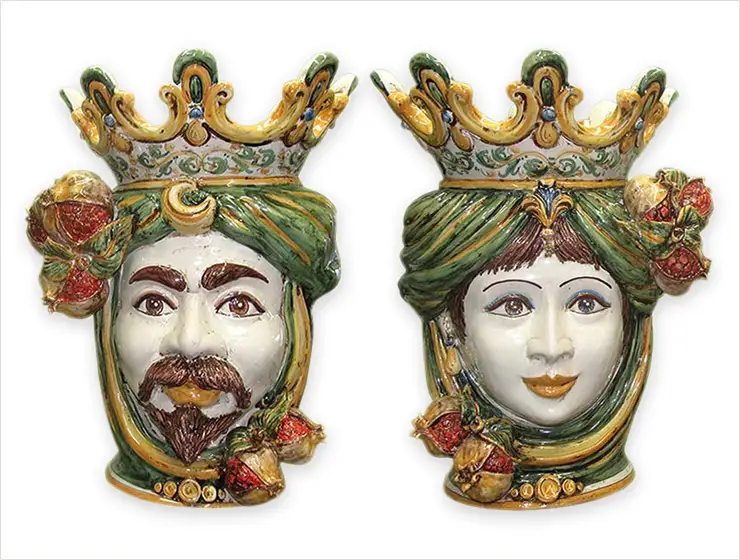CALTAGIRONE

 Caltagirone is one of the most lively Baroque towns in central Sicily. It’s known in Italy as “The city of Sicilian ceramics” due to its thousand-year-old tradition. The name itself – Caltagirone – derives from an Arabic word meaning the Castle or Fortress of the vases.
Caltagirone is one of the most lively Baroque towns in central Sicily. It’s known in Italy as “The city of Sicilian ceramics” due to its thousand-year-old tradition. The name itself – Caltagirone – derives from an Arabic word meaning the Castle or Fortress of the vases.
Caltagirone ceramics have been used for centuries to decorate houses, public and private parks, churches, streets and squares.
The typical colours of local pottery, sage green and yellow, are the colours of Sicily itself, of its sun and breathtaking beauty.
A visit to the Regional Museum of Ceramics is a must to appreciate the artistic value of Sicilian pottery and its evolution over the centuries.
The local production of functional pottery started as early as the 2nd century b. C., thanks to the abundance of clay in the area. The style and techniques adopted by the first inhabitants of Caltagirone were deeply influenced and modified by the many dominations which took turns in this part of Sicily. First the Romans, then the Greeks, the Arabs, the Spanish and the Normans, each culture provided new elements of creativity and technical experience to the local ceramic production, making it one of the most distinctive in Italy.
Ceramic is everywhere in Caltagirone, strictly combined with architectural works: in ancient and modern buildings, churches, monuments, parks and squares.
The main landmark of the city is the 142-step monumental Staircase of Santa Maria del Monte, built from 1608 in the old part of the town. The peculiarity is that each step is decorated with different hand-decorated ceramics, using styles and figures derived from the millennial tradition of pottery making. Once a year, on and around the day of the city’s patron saint, (St. James, 25 July), the staircase is illuminated with candles of different colours arranged in order to reconstruct an artistic drawing of several tens of meters.
Nowadays, besides the traditional and lively production of pottery, both functional and decorative, Caltagirone is also famous for the ceramic whistles and the Presepi, nativity scenes made with terracotta or ceramic characters and accessories, which carefully revive the daily life of simple people over the centuries.
Caltagirone is definitely worth a visit. You’ll be able to enjoy its lively traditions, folklore and beautiful buildings. Not to mention the great Sicilian food and wine.
In order to protect its beautiful Baroque building and churches, the city has been inserted together with the surrounding territory in an area protected by the UNESCO World Heritage program.
